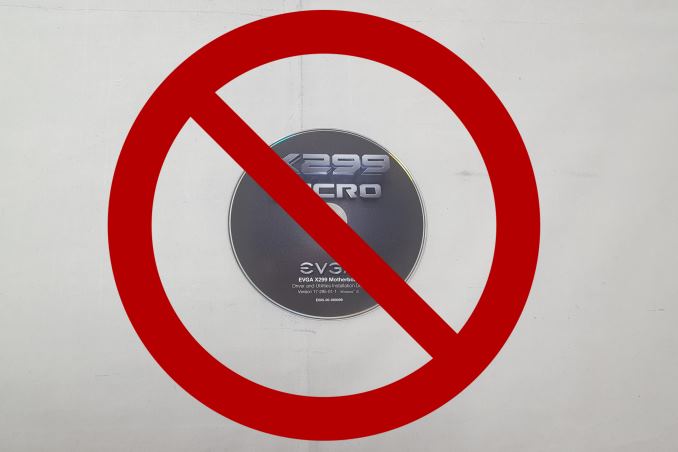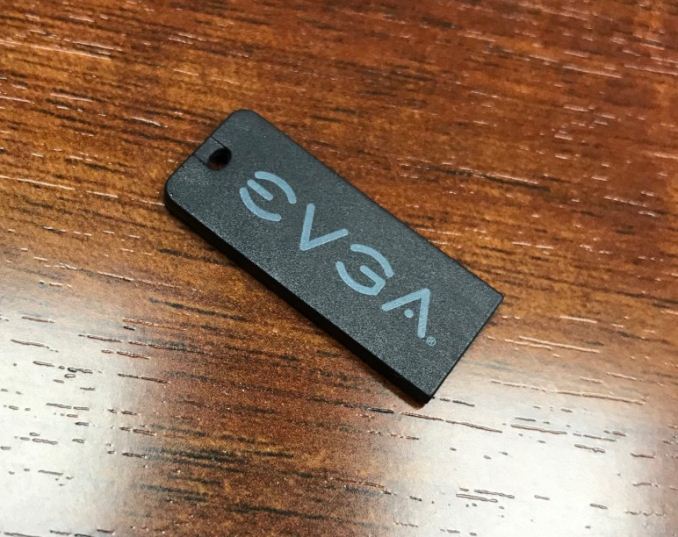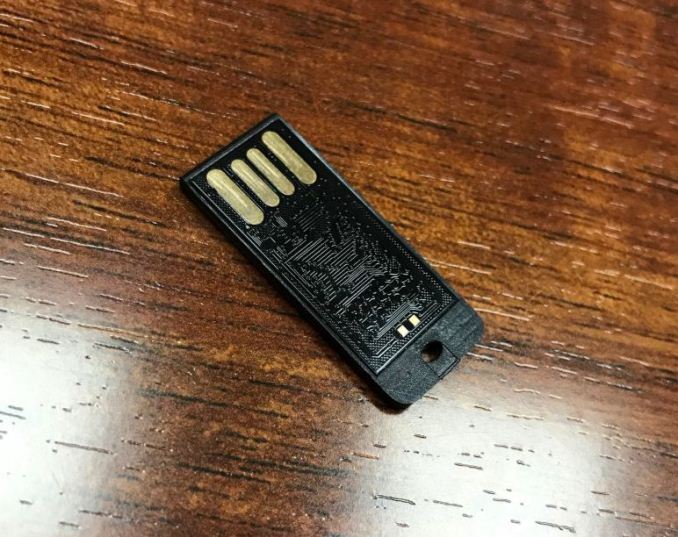EVGA Forgoes Driver DVDs: It’s All About The USB Flash Drive
by Joe Shields on May 18, 2018 11:00 AM EST- Posted in
- Motherboards
- EVGA
- Drivers
- USB

Driver disks of some sort have been part of a PC enthusiast's life as far back as I can remember. Before Windows included drivers, they all came from media included with the motherboard. I first recall them on floppies then once optical media took hold, moved to CDs. As the number of drivers and included software increased in both quantity and size, it outgrew the capacity of CDs and board partners moved to DVDs offering more capacity and faster read speeds. For example, a board partner's driver disk from a Z370 based board weighs in at 6.57GB on the disk, far eclipsing the capacity of a CD (~700MB) and that of a single-sided DVD (4.7 GB).
To that end, yesterday on Twitter, EVGA’s Global Product Management Director Jacob Freeman announced that in the future, EVGA motherboards will not come with driver disks, but USB Flash which contains all the needed drivers and software. This includes H370 based boards now and others moving forward. Instead of a DVD we are used to seeing, EVGA will include a small 8GB USB flash drive with the EVGA logo printed on it instead. While this isn’t a first (a high-end Asus board in the past included one), it certainly is welcome, if only for the quick installation from USB versus CD/DVD installs. The drive is also re-writeable so it can be used for other purposes as well.
Overall, it is good to see EVGA embrace what we feel is the modern, and faster, medium for base driver and software installations, and hope other board partners follow suit. I do wonder a bit about the cost, but even if it adds $1 more, it is worth it (to me). No more whirring from the optical drive to install drivers with H370 and future EVGA motherboards. It’s about time!
Editor's Note: EVGA has confirmed the drive is USB 2.0 based and costs about twenty times more than an optical disk would. Thankfully, EVGA says that significant cost increase will not trickle down to the consumer, which we all appreciate.
I highly doubt that other manufactures will switch to USB drives anytime soon considering the cost is about 20x that of a DVD. Even for a small 8GB USB 2.0 one, but it’s about time someone sets the standard for 2018 🙂 https://t.co/5L1N4trO8q
— Jacob Freeman (@EVGA_JacobF) May 18, 2018












90 Comments
View All Comments
Lord of the Bored - Saturday, May 19, 2018 - link
Same story, only Texas summers.piiman - Saturday, May 19, 2018 - link
Hate to break it to you but Win 10 doesn't have all the network drivers either. I've had a asus wireless nic forever and it is never found after I install win 10. I always have to dig up the Driver CD. New HW may also not be included. However Win 10 is pretty good at it even if you change MB it will usually at least boot with the driver from the dvd.Alexvrb - Sunday, May 20, 2018 - link
Why wouldn't you just stick the driver on a USB stick or external drive?IBM760XL - Tuesday, May 22, 2018 - link
XP won't have network drivers by default, but USB 2.0 will work out of the box, at least if it's SP2. I've been using an external HDD connected by USB 2.0 to install drivers on fresh XP installs for years.Although I doubt a ton of people will be installing XP on an H370 board. Even I haven't yet installed XP on anything newer than Sandy Bridge.
bug77 - Saturday, May 19, 2018 - link
This isn't only about the money.You can't simply get online and grab the latest drivers if you haven't installed the chipset and network drivers first. A bit of a catch 22. Also, depending on which USB port you use, your stick may not work before you install some USB drivers.
timecop1818 - Sunday, May 20, 2018 - link
I'm sorry, but if you're using some garbage hardware with such a random USB chipset that even Windows 10 doesn't have a driver for it, you should probably just quit computing, it's not for you.mapesdhs - Sunday, May 20, 2018 - link
Ah yes so your opinion of what is valid hw should apply to everyone, in all situations, no matter what.Alexvrb - Sunday, May 20, 2018 - link
He's not entirely wrong. What modern USB chipsets don't have at least basic out of the box support in Win10? Heck even BEFORE you install Windows, for that matter, for example in the BIOS for flashing. If you don't have at least one USB port that works, you have bigger issues.Anyway, it's not hard to stick wifi drivers on a stick/external drive/phone/punchcards and get a PC online so you can snag drivers. If you don't have functional internet but still need a cutting edge PC, go into town and borrow some bandwidth, download most current drivers ahead of build time.
random_programmer - Tuesday, May 29, 2018 - link
Can't talk of Windows 10 as I've never used it, but when I installed Windows 8.1 on an ASUS Z97 motherboard, it didn't know what to do with the Intel NIC, and needed to be given the drivers before it would do anything involving the ethernet port (thankfully I'd downloaded them to a USB stick firts...).alpha754293 - Monday, May 21, 2018 - link
So here is a question for people then - how do you guys get your OS installed the if you're not using an optical disc?Does EVERYBODY install via a bootable USB drive?
What happens if you don't have USB 3.0 drivers that are rolled in to the installation media?
Or does EVERYBODY else all just use PXE to jumpstart the installation of the OS onto their system? (and what happens if you don't have updated network drivers in your PXE install image?)